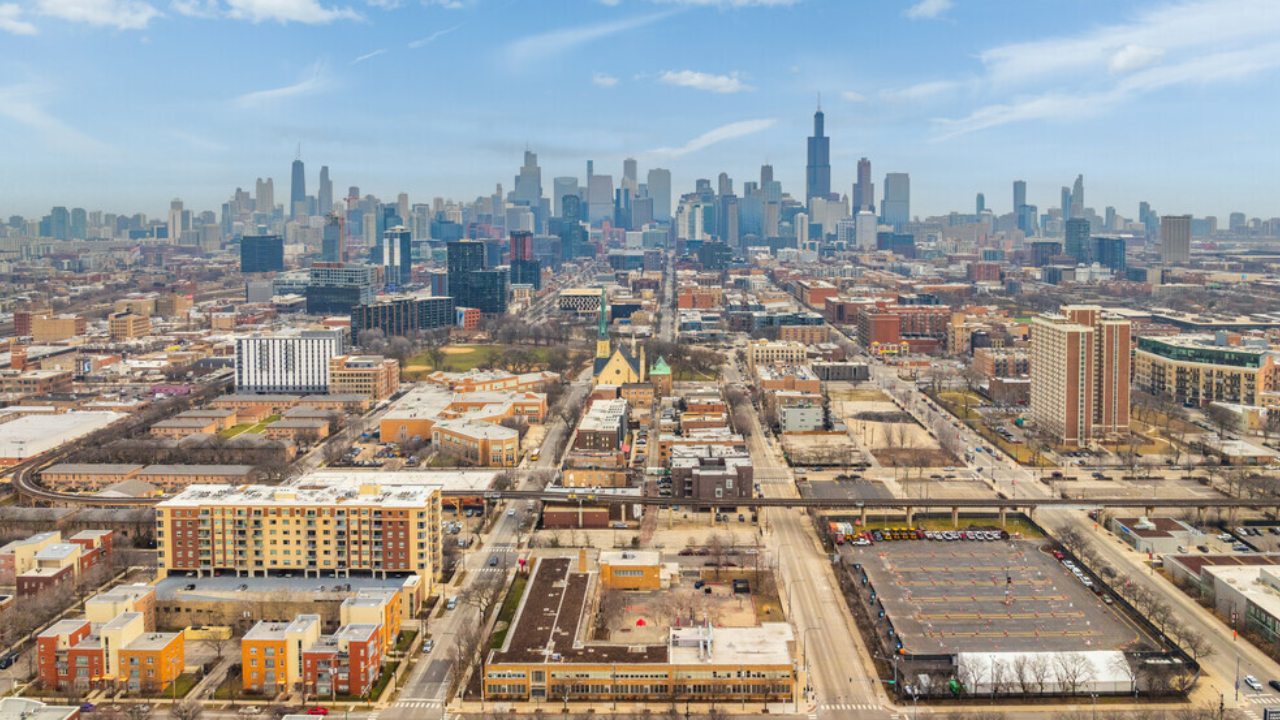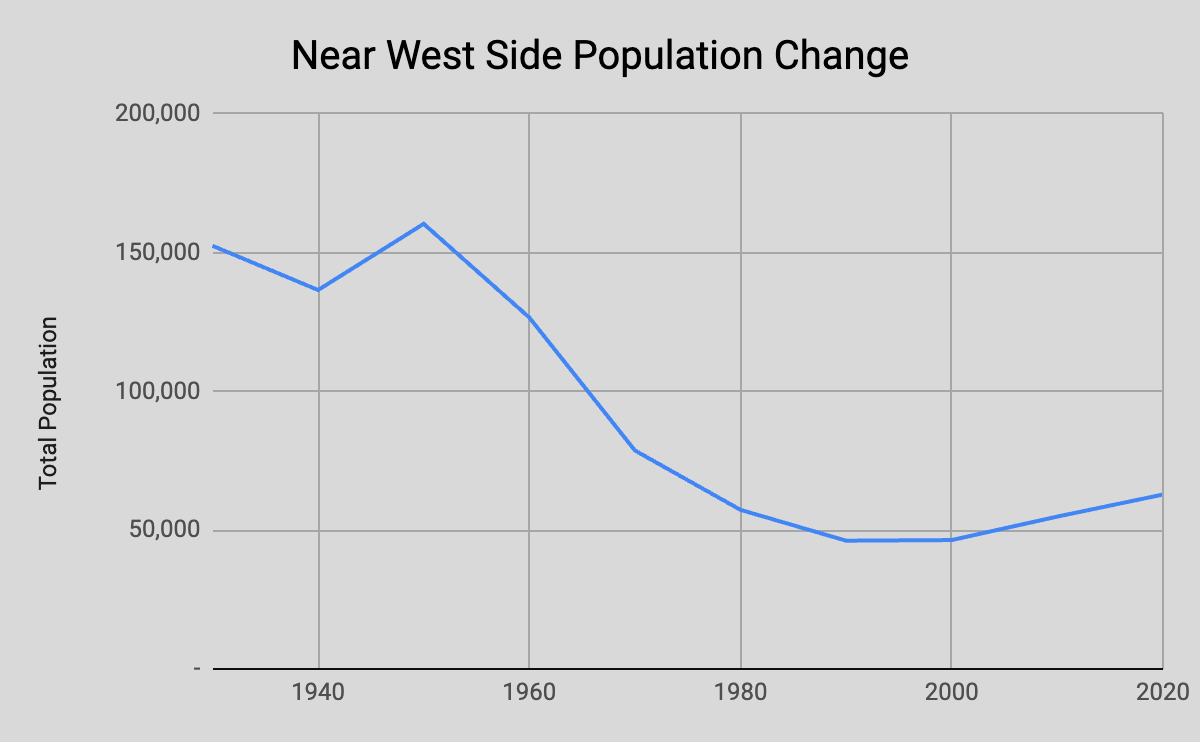Exploring Chicago’s Near West Side: A Journey Through History, Landmarks, and Legacy
Feb 06, 2025
Nestled just west of the Chicago River and adjacent to the bustling Loop, this area is a treasure trove of history, culture, and innovation. Let’s take a deeper look and explore what makes the Near West Side truly special.
Near West Side by the Numbers



Origins of the Near West Side
Early Settlement and Development
In the late 1800’s, the Near West Side began its transformation from open prairie to a vibrant urban community. Its prime location, just west of the Chicago River, made it an attractive spot for settlers and businesses alike. The construction of railroads and the establishment of the Lake Street business district further spurred its growth, turning it into a bustling hub of activity.
A Melting Pot of Cultures
Chicago has always been a city of immigrants, and the Near West Side is a testament to this rich tapestry. In its early days, the neighborhood welcomed waves of Irish, German, Italian, Greek, Eastern European, African American, and Mexican immigrants. Each group brought its unique traditions, flavors, and stories, contributing to the diverse cultural landscape we see today.
Key Historical Moments
The Great Chicago Fire of 1871
In October 1871, a blaze broke out and rapidly spread, leaving a significant portion of Chicago in ruins.The aftermath saw a massive influx of people seeking refuge in the area, leading to rapid reconstruction and further diversification of the community.
Hull House: A Beacon of Social Reform
In 1889, social reformer Jane Addams co-founded Hull House on South Halsted Street. This settlement house became a cornerstone for social change, offering services like childcare, education, and healthcare to the immigrant population. Hull House not only provided essential support but also fostered a sense of community and empowerment among residents.
Labor Movements and Industrialization
The late 19th and early 20th centuries were periods of intense industrial growth. The Near West Side, with its factories and warehouses, became a focal point for labor movements advocating for workers' rights. The Haymarket Affair of 1886, a pivotal event in labor history, took place nearby and underscored the struggles and resilience of the working class.
Civil Rights Movement
Fast forward to the mid-20th century, the Near West Side played a role in the Civil Rights Movement. As African American populations grew, the neighborhood became a center for activism, with residents advocating for equal rights, better housing, and economic opportunities. This era further shaped the community's identity and commitment to social justice.
Urban Renewal and Transformation
The latter half of the 20th century brought significant changes. Urban renewal projects aimed at revitalizing the area led to the construction of new infrastructures, such as the University of Illinois at Chicago (UIC) campus. While these developments brought growth, they also sparked debates about displacement and the preservation of the neighborhood's cultural heritage.
Notable Residents
The Near West Side has been home to many influential figures who have left indelible marks on history.
- Jane Addams: As the co-founder of Hull House, Addams was a pioneer in social work and a champion for immigrants and the poor. Her efforts earned her a Nobel Peace Prize in 1931.
- Upton Sinclair: The acclaimed author of "The Jungle" resided in the area while researching the harsh conditions of the meatpacking industry, bringing national attention to workers' rights and food safety.
- Frankie Knuckles: Known as the "Godfather of House Music," Knuckles' innovative sounds at local clubs in the 1980s helped birth a genre that would influence music worldwide.
- David Schwimmer: Before gaining fame as Ross Geller on "Friends," Schwimmer owned a condominium at 850 West Madison Street, highlighting the neighborhood's appeal to artists and actors.
Landmarks & Cultural Institutions
The Near West Side boasts a plethora of landmarks that tell the story of its rich past and vibrant present.
Hull House Museum
Located on the UIC campus, the Hull House Museum preserves the legacy of Jane Addams and her groundbreaking work in social reform. Visitors can explore exhibits that delve into the lives of immigrants and the progressive initiatives that emerged from this historic site.
United Center
Sports fans, rejoice! The United Center, opened in 1994, is the home arena for the Chicago Bulls and Blackhawks. Beyond sports, it also hosts concerts and special events, making it a central hub for entertainment in the city.
Union Park
Established in the 1850s, Union Park has long served as a green oasis for residents. Today, it's not only a place for relaxation but also a venue for music festivals and community gatherings, reflecting the neighborhood's dynamic spirit.
Greektown
Along Halsted Street between Van Buren and Madison Streets lies Greektown, a vibrant corridor known for its authentic Greek cuisine, lively festivals, and the National Hellenic Museum, which celebrates Greek heritage and contributions.
Illinois Medical District
Spanning over 560 acres, the Illinois Medical District is one of the largest medical districts in the U.S. It houses renowned institutions like the University of Illinois Medical Center and Rush University Medical Center, making it a pivotal center for healthcare and research.
Modern-Day Near West Side
The Near West Side continues to evolve, blending its rich history with modern developments.
Growth and Gentrification
In recent years, the neighborhood has experienced significant growth and gentrification. Historic buildings have been transformed into trendy lofts, and new businesses have set up shop, attracting a diverse mix of residents. While this revitalization has brought economic benefits, it also raises discussions about maintaining affordability and inclusivity.
Culinary and Arts Scene
The West Loop, a sub-area of the Near West Side, has emerged as a culinary hotspot. With a plethora of restaurants, bars, and cafes, it offers a gastronomic adventure for food enthusiasts. Additionally, art galleries and cultural events have flourished, adding to the area's vibrant atmosphere.
Real Estate and Demographics
The real estate landscape has seen a surge in development, with new residential and commercial properties reshaping the skyline. This growth has attracted a mix of young professionals, families, and longtime residents, contributing to the neighborhood's dynamic demographic profile.
Conclusion
From its origins as a hub for immigrants to its current status as a center for culture, education, and innovation, the Near West Side encapsulates the spirit of Chicago. Its rich history, diverse community, and continuous evolution make it a compelling destination for both residents and visitors. So, next time you're in the city, take a stroll through the Near West Side—you'll discover stories waiting to be told and experiences waiting to be had.
Stay connected with news and updates!
Join our mailing list to receive the latest news and updates from our team.
Don't worry, your information will not be shared.
We hate SPAM. We will never sell your information, for any reason.

